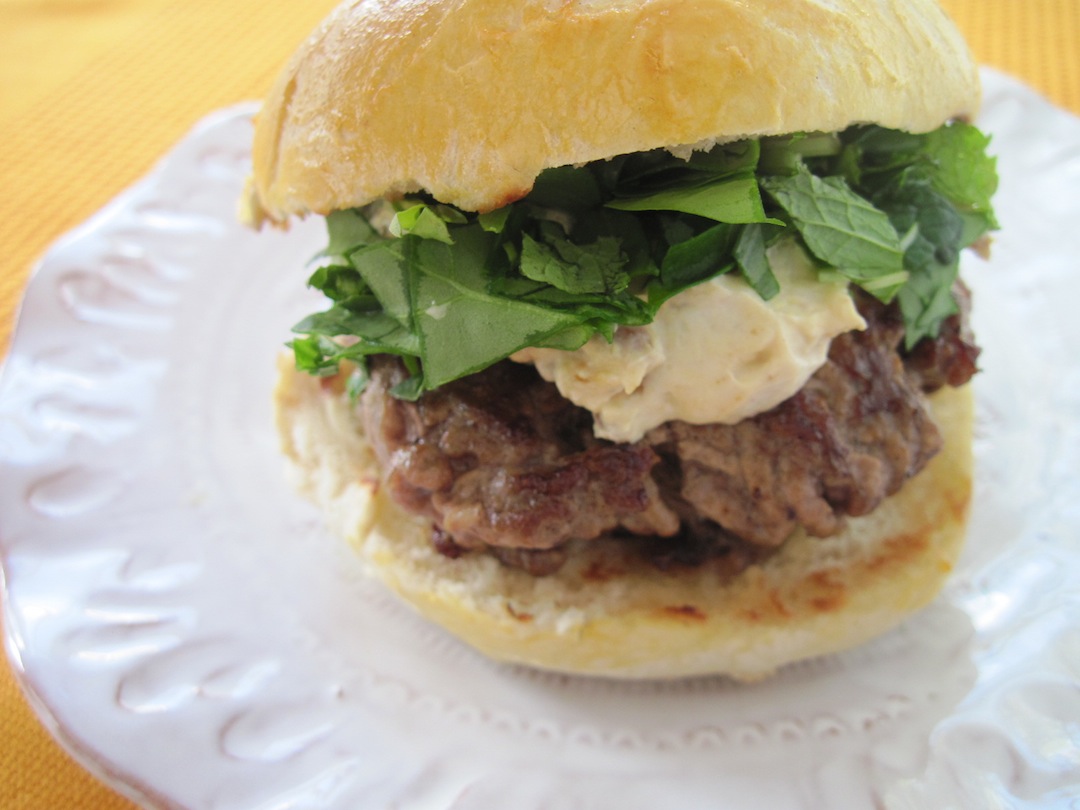 Burger on Tandir with Aromatic Herbs and Apricot-Saffron Yogurt Sauce
Burger on Tandir with Aromatic Herbs and Apricot-Saffron Yogurt Sauce
Azerbaijan is on the coast of the Caspian Sea and borders Iran, Armenia, Georgia and Russia.
Because Azerbaijan was part of the Soviet Union from 1920 to 1991, the traditional foods fell out of popular use and were supplanted by Soviet staples like cabbage and potatoes. Apparently, at least according to a couple of sources I found, the Soviets wanted all of their people to eat the same kinds of food to bring them together culturally, so they set up what sounds like state run cafeterias, where everyone could get free or cheap (not clear to me which) food. This further had the effect of encouraging women to participate in the workplace rather than staying at home and cooking for their families. Since 1991, gradually the old flavors and cooking methods are being re-imported from Azerbaijanis in Iran.
I chose to reflect the traditional flavors rather than go with Soviet style cuisine, primarily because the Azerbaijani flavors are interesting and I wanted to explore how they would work with a burger. In homage to the Soviets, I did make a side dish that incorporates Brussels sprouts and onion along with pasta – not exactly typical Soviet food, but it’s a tasty side dish, so please forgive the creative license. For the burger, I have again tackled baking with a homemade tandir bread. You could easily serve this on a store bought bread or roll – I would choose something with a firm-ish crust like ciabatta or focacia. We did try the burger with store bought pita bread and it was ok, but not as good as a more substantial roll.
Azerbaijani cuisine uses a plethora of aromatic herbs and an herb salad is often a side dish with meat. You can substitute your favorite herbs for the ones I’ve used here anything from dill to cilantro to basil would be appropriate in Azerbaijani cooking. Yogurt is a key food in this entire region, Azerbaijanis, unlike Armenians, frequently mix fruit and/or nuts into yogurt and the addition of Turkish apricots makes a yummy counterpoint for the aromatic herbs.
This burger has a light and delicate flavor. The bread is just slightly sweet, the yogurt adds a little more sweet, then the herbs give a brightness and freshness to the whole dish. It’s perfect for a nice sunny spring day. We served it with Five Rivers 2009 Pinot Noir – only $14 at Whole Foods, great price for a Pinot, nice delicate flavor. I also tried a veggie version of this burger and I thought that the garlic in Gardenburger Original flavor overpowered some of the Azerbaijani flavors – it was ok, but not my favorite veggie option.
This is an easy recipe, the burger and toppings are simple, even the bread is relatively easy to make. So fire up the grill, pour yourself a glass of Pinot and enjoy.
Azerbaijan Burger
2 teaspoons pomegranate molasses
1 teaspoon ground coriander
½ teaspoon ground sumac
Salt and pepper
1 pound 80% lean ground beef
4 Tandir Rolls (recipe below)
Apricot-Saffron Yogurt Sauce (recipe below)
Aromatic Herbs(recipe below)
In a small bowl, combine the molasses and spices. In a medium bowl add the molasses mixture to the ground beef and mix until thoroughly combined. Form the meat into four equally sized patties and cook to desired temperature.
Slice the Tandir Rolls in half and grill the rolls until lightly toasted. Place one burger patty on each roll. Spread 1-2 Tablespoons of the Apricot-Saffron Yogurt Sauce on each top “bun”. Top each burger with 2-3 Tablespoons Aromatic Herbs, then cover with top bun.
Serve with Roasted Brussels Sprouts with Spring Onions and Orzo (recipe below)
Tandir Rolls
¾ cup water at 120˚F
1½ teaspoon fast acting yeast
1 Tablespoon honey
1¾ cup flour plus extra for kneading
¾ teaspoon kosher salt
Olive oil
1 egg yolk beaten
Combine first three ingredients in a large bowl and wisk until yeast is dissolved. You should see some foamy bubbles coming from the yeast. In a small bowl combine the flour and salt. Slowly add the flour mixture to the yeast mixture (about ½ cup at a time). When all of the flour is mixed in the dough should form a ball. Flour a work surface and knead the bread for 8 minutes (time yourself, otherwise you’ll do two minutes and think you’ve done eight), re-flour as necessary during the kneading process to keep the dough from sticking. Oil a clean dry glass bowl and set dough ball inside – cover with a dry towel and let it rest away from drafts for 1 hour or until it doubles in size.
Place a pizza stone in a cold oven then preheat the oven to 400˚F (if you don’t have a pizza stone, just preheat the oven and bake the rolls on a baking sheet). Once dough has doubled divide it into four equal portions, roll each portion into a ball then hand flatten to form a disk about ½ inch thick. In the picture above, I left two of the rolls in balls and the shape is just a little too spherical, the two rolls in front were flattened and worked much better as burger buns. You can also tell that baking isn’t my forte, each of my rolls turned out a slightly different size and shape, luckily they tasted good.
Let the dough rest for 15 minutes. Brush each dough round with egg yolk. Place the dough rounds directly onto the hot pizza stone and bake for 10-12 minutes or until golden.
Apricot-Saffron Yogurt Sauce
½ cup 2% milk fat Greek Yogurt
6 Turkish apricots chopped*
¼ teaspoon ground coriander
4 threads of saffron crumbled
½ teaspoon kosher salt
Combine all ingredients in a bowl and stir until well mixed. Refrigerate for at least a half hour before serving (this allows the flavors to meld together). Stir everything up after it has sat so that you can make sure that the saffron is mixed well into the yogurt.
*Turkish apricots are available in any well stock grocery store. They are brown rather than orange and have a darker, more date/fig like flavor than their California counterparts. If you can’t find Turkish apricots, use dates or figs instead.
Aromatic Herbs
¾ cup watercress, chopped
⅓ cup fresh tarragon, chopped
⅓ cup fresh mint, chopped
Try to chop all of the ingredients to similar sizes. Combine all ingredients – mix well to evenly distribute the flavors.
Roasted Brussels Sprouts with Spring Onions and Orzo
1 pound Brussels sprouts
1-2 Tablespoons Olive oil
Kosher salt
Fresh ground pepper
3 spring baby Vidalia onions
½ cup orzo
Preheat oven to 450°. Slice the Brussels sprouts thin and discard stems. Toss the sprouts in olive oil (should be just enough to coat the sprouts, but they shouldn’t be swimming in it) then generously salt and pepper. Spread on a baking sheet and roast in oven for 10-15 minutes stirring half way through. They’re done when you get some browning of the sprouts. In the meantime, slice the onions in half length-wise and grill them over high heat until lightly browned on each side. Chop the cooked onions into bite size pieces. Cook the orzo per the directions on the package then drain. Toss the Brussels sprouts, onions and orzo together in a large bowl and adjust salt and pepper to taste.
©Copyright 2011 Linda Monach

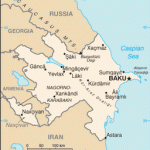
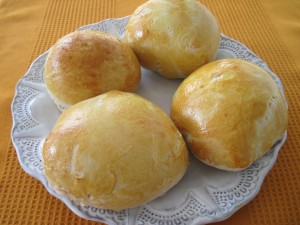
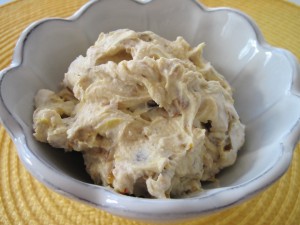
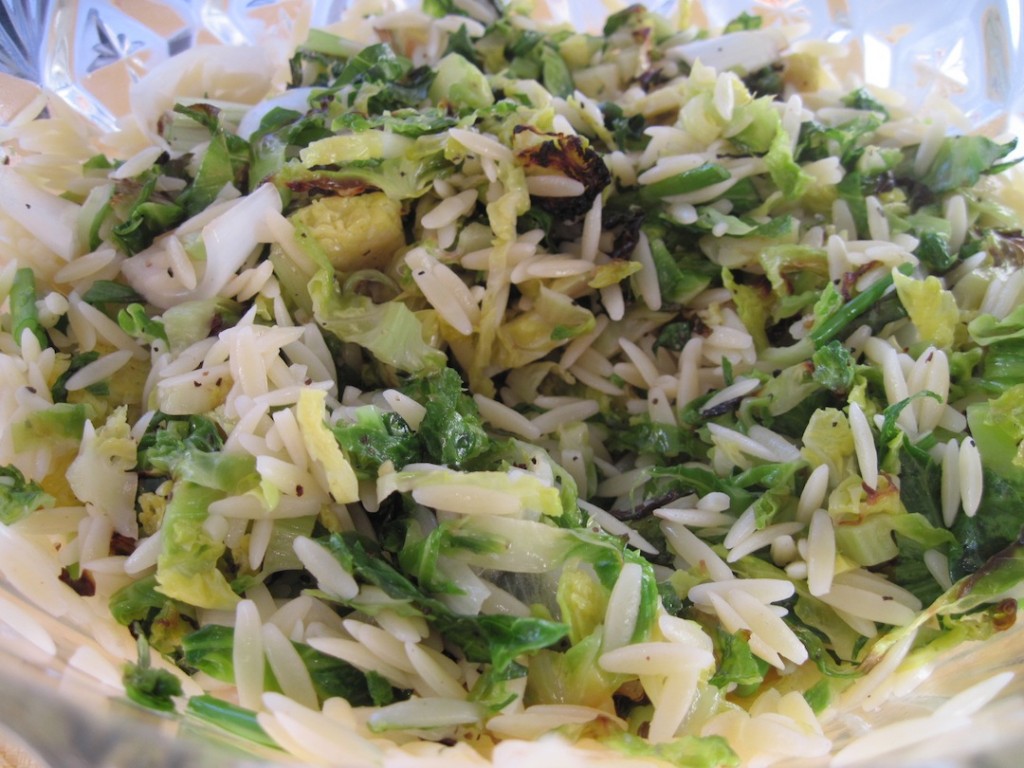


I have to say, this website was a great find, I love what you are doing with the 192 countries/burgers idea. I will definitely be adding this site to my favorite keepers! Love the idea, and love burgers 🙂
thanks so much – we are having a great time on this adventure. i get to learn about the world, try new flavors and feed my family yummy burgers – it’s a good life. I hope you try out the recipes and let me know what you think.
This sounds absolutely delicious — love your blog!
Thanks – I hope you try out some burger recipes – would love to hear if the recipes work for you.
Hi. Just saw your blog linked on “the Kitchen.” What a fun idea. I’m sure I’ll stop back often and see what you’re coming up with. Not sure if you’re looking for suggestions, but thought I’d offer. I live in the United Arab Emirates and there’s actually a place here that sells camel meat burgers topped with camel milk cheese. Seems sad to me, so I wouldn’t actually suggest it. But, there’s not much unique about the food here, except for a very starchy bean dish (that honestly tastes and feels like paste). Maybe you could come up with a half meat (lamb is popular here) and half bean burger with cumin and corriander….that would fit in with this part of the world.
i’m always looking for suggestions. i like the idea of the bean/meat burger. i’ll keep it in mind for future recipes. i’ll pass on camel meat though, i’m not that much of an adventurer!
Wow, it’s a long wait until R (Russia), so I’m subscribing. It’s a great idea for a blog, by the way.
A minor correction: in the USSR all national cultures and traditions, including culinary, were actually nurtured and diversity encouraged by the state. All Soviets, regardless of their ethnic origin, knew and loved Azeri kebabs, Uzbek pilav, Ukrainian borsch etc. Sure, there were bland pan-Soviet cutlets, macaroni and compotes served in university and factory canteens, but in those a more functional approach prevailed (keep students, employees etc fed at minimum cost), so you wouldn’t expect much from them. At the same time, as I’m saying, everybody had friends from other republics , there were restaurants with regional cuisine all over the Union etc. So actually food wasn’t all that bad and scarce back then.
please hang in there until we get the Rs, hopefully it will be worth the journey. thanks for the correction on the USSR and food issue – nice to know the real facts, I will definitely correct this for the book.
And yeah, food wasn’t literally free in those state-run canteens (there weren’t any other until 1991), but still dirt-cheap, you could get a full three-course meal for pocket change.
Wow! “… national cultures and traditions, including culinary, were actually nurtured and diversity encouraged by the state”?? Only ethnic Russian could feel that way living in Soviet Union! A “dirt-cheap full three-course meal”? You’d get what you paid for – dirt-tasting stuff without much of real meat or butter because all that would be stollen. Most people in Soviet Union, particularly those who were not lucky to live in Moscow (which was relatively well-supplied), knew that food in those “stolovaya” is no good, or even outright dangerous.
It is true, however, that those who lived in Moscow could experience the ethnic food of the nations comprising the USSR. In Moscow (i.e., the capitol of USSR), there were restaurants established for every “republic” of the Soviet Union, as well as for each Eastern Block country. Some were actually very good.
As to the rest of Soviet Union, particularly Russia itself, the food was generally very bad (if there was any). In most places, a bad version of Georgian food was the only diversion from the “standard” menu poorly made of horrible ingredients. I experienced this first hand on my business trips outside of Moscow.
In Baku, Azerbaijan, where I grew up, the best food could be found only in illegal privately-owned (thanks to corruption of the Soviet officials, really!) places where the real Azerbaijani food was served. The “official” restaurants had pretty much the same menu as anywhere else – “Kiev cotlets,” “chicken-tabaka”, etc.
I’m 50, ethnic Armenian, born and grew-up in Azerbaijan, lived in Moscow for more than 10 years before immigrating to the US more than 20 years ago.
welcome Gary and thanks for your comments – let’s try to keep it friendly here. I’d like to avoid too much political banter and your “only ethnic Russian” is a little curt. however, your account of how life was under the USSR sounds like a lot of what i read in my research. but all of the politics aside, we’re here for the food and the good news is that Azerbaijani food survived and is really good. i’m hoping i got it right because i love the subtleties of the aromatic herbs and the yogurt, such a great spring dish. i hope you try the burger and let me know if any of the flavors remind you of your childhood – that would be the greatest compliment.
Pingback: Azerbaijan burger recipe | burgers here and there
Pingback: De wereld rond… met hamburgers! « FoodMoods
The recepe, I feel, captured some of the flavors and the mood of Azeri food. I think it’s a success. Of course, it’s not an Azeri dish, not even close. 🙂 But I don’t think that was your intent. Thank you very much.
Being ethnic Armenian, I also checked out your Armenian burger, and I felt the same way about that one. By the way, those who live in cities with a sizable Middle Eastern community (Iranian, Turkish, Armenian, etc.) should be able to find a decent lavash in their ethnic stores. Thanks again.
thank you Gary for the kind words. I probably could find a decent lavash here in Boston, but i made a rule of no shopping in ethnic stores – I wanted to be sure that even folks who live in the middle of no where could make most of the recipes. of course i make an exception for spices because those are so easy to order online (and i couldn’t live without my specialty spices).
Two words: Thank You!!!!!
T
two words, you’re welcome 🙂 (ok, that might be 2.5 words)
I was pretty pleased with this one, not one of my very favorites but nothing to complain about. I had actually expected the herbs to overpower the taste of the beef but that wasn’t the case at all. I thought the overall taste was pretty mild, so I’m glad I was using some decent (Black Angus, though not grass-fed) beef. The sauce lent a rich and sweet touch. Always fearful of baking, I used ciabatta for this. One of my diners complained that she like it except for the bread. Another argued that no, the bread was perfect. I’m happy to have something to discuss over dinner. I wanted to pair it with an Azerbaijan beer, but couldn’t fins any locally, so I followed your lead and served it with a Pinot, since at least Pinot Noir are actually grown there, and I think it was a good choice.
It is my day for true confessions, I actually had to go back and look up Azerbaijan to remember the recipe! I guess that makes it not one of my favorites by definition? The herbs were tricky to get right because it is easy to overpower with herbs. I tried four different combinations of nine different herbs to get to the final recipe.
Pingback: Azerbaijani recipes | Mbrfinancial